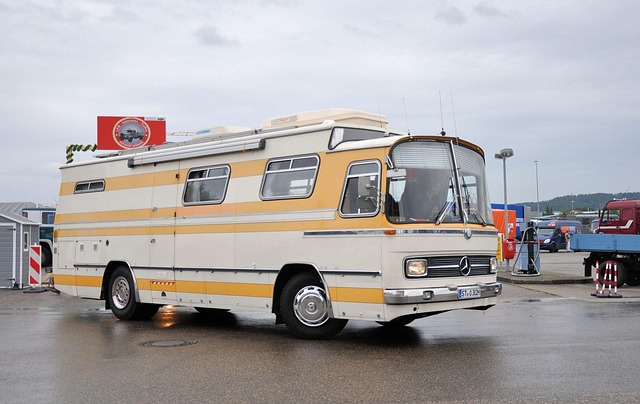Looking to register your car in California? This comprehensive guide walks you through every step, from understanding the requirements to paying fees. First, grasp the essential needs for car registration in the Golden State. Then, gather crucial documents and prepare for the DMV’s VIN verification process. Follow our simple steps to complete the application and seal the deal. By the end, your California car registration will be a breeze!
- Understand Requirements for Car Registration in California
- Gather Necessary Documents for Vehicle Registration
- Perform DMV VIN Verification Step by Step
- Complete and Submit Application for Car Registration
- Pay Fees Associated with Registering Your Vehicle in CA
Understand Requirements for Car Registration in California

Before registering your car in California, it’s crucial to understand the specific requirements and steps involved. The California Department of Motor Vehicles (DMV) mandates several key steps for vehicle registration, including a thorough vin verification process. This involves checking the vehicle’s unique identifier, known as the Vehicle Identification Number (VIN), against state records to ensure its authenticity and history. A reliable method for this VIN inspection is through a mobile vin verifier, which provides on-site or remote services for convenience.
The DMV requires comprehensive documentation of your car’s history, such as proof of ownership, insurance, and any recent safety inspections. Additionally, a valid driver’s license and necessary fees are essential. If you’re undergoing a title transfer or replacing a lost registration, the process may differ slightly, with added steps for documentation verification. A vin inspection, whether conducted by a mobile vin verifier or through traditional means at a DMV office, is a critical component of ensuring compliance and securing your vehicle’s registration in California.
Gather Necessary Documents for Vehicle Registration

Before registering your car in California, make sure to gather all the necessary documents. This includes proof of ownership, such as a bill of sale or previous registration, and valid identification like a driver’s license. Additionally, you’ll need to undergo a DMV VIN verification process, which ensures that the vehicle’s unique identifier matches the information on record.
A crucial step is to have your vehicle’s VIN (Vehicle Identification Number) inspected accurately. You can do this through various means, including using a mobile VIN verifier for convenience. This digital tool allows you to complete the inspection promptly and efficiently, ensuring a smoother registration process at the California DMV.
Perform DMV VIN Verification Step by Step

To start the car registration process in California, the first step is to undergo a DMV VIN verification. This involves checking the vehicle’s Vehicle Identification Number (VIN) through the Department of Motor Vehicles (DMV). Begin by visiting the official DMV website and locating their online VIN verification tool. You’ll need your vehicle’s VIN, which can typically be found on the driver’s side door jamb or in your car’s insurance documents.
Inputting the VIN into the system, you’ll receive instant feedback about the vehicle’s history, including any reported accidents, outstanding loans, or recall notices. If everything checks out, the next step is to schedule a physical inspection at a local DMV office. Alternatively, consider using a mobile vin verifier service for added convenience. This process ensures your car meets safety standards and helps protect against potential issues in the future, making it a crucial step in registering your vehicle in California.
Complete and Submit Application for Car Registration

To begin the registration process for your car in California, you’ll need to complete and submit an Application for Car Registration at a DMV (Department of Motor Vehicles) office or online through their official website. Before you start, ensure that your vehicle meets all legal requirements and that its emissions have passed inspection, often involving a DMV vin verification process. This step is crucial as it confirms the vehicle’s identity using its unique Vehicle Identification Number (VIN).
When filling out the application, provide accurate information about your car, including its make, model, year, and color. You’ll also need to present valid identification documents and proof of insurance. If you’re opting for a mobile vin inspection or mobile vin verification, some third-party services can assist with this step, making the process more convenient. This alternative involves a specialist performing the VIN check remotely using your vehicle’s details.
Pay Fees Associated with Registering Your Vehicle in CA

When registering your vehicle in California, there are certain fees associated with the process that you’ll need to pay. The California Department of Motor Vehicles (DMV) charges a fee for vehicle registration and title transfer. These costs can vary depending on the type of vehicle, its age, and whether you’re transferring a title or registering a new purchase. One crucial step in the registration process is the DMV’s VIN verification, ensuring that your vehicle’s unique identifier matches the records.
For convenience, many residents opt for a mobile vin verifier or conduct a mobile vin inspection to streamline this requirement. By utilizing these services, you can save time and effort, as they provide on-site VIN verification, allowing you to move forward with registration without unnecessary delays.
Registering a car in California involves understanding specific requirements, gathering essential documents, and completing crucial steps like DMV VIN verification. By carefully navigating these processes, you can ensure your vehicle is legally registered and ready for California’s roads. Remember to keep all necessary paperwork up-to-date for smooth future transactions.
